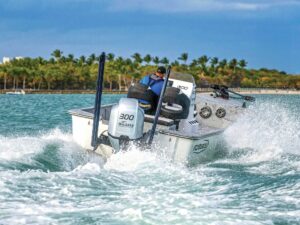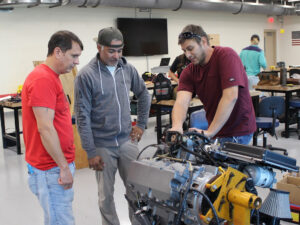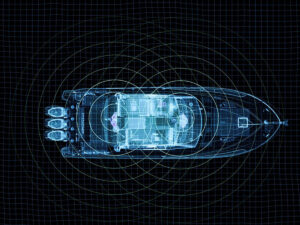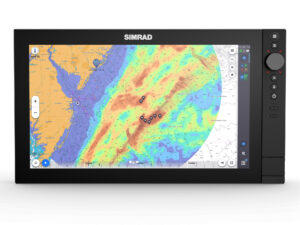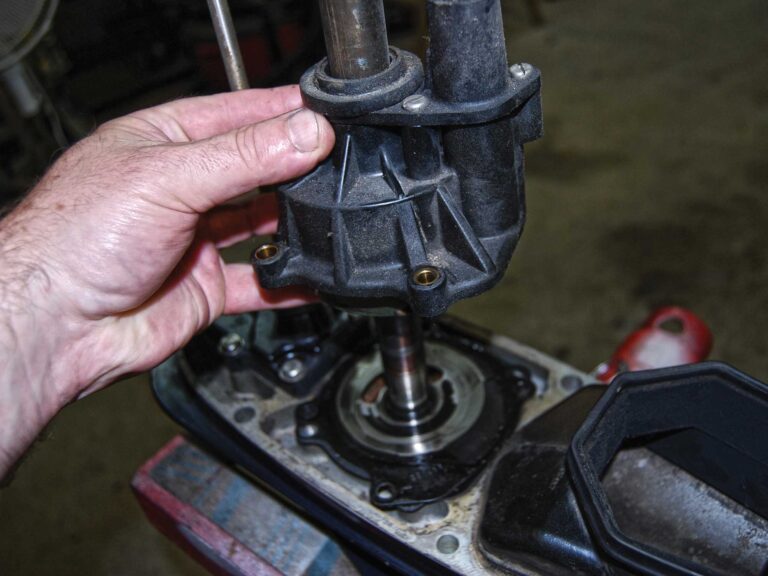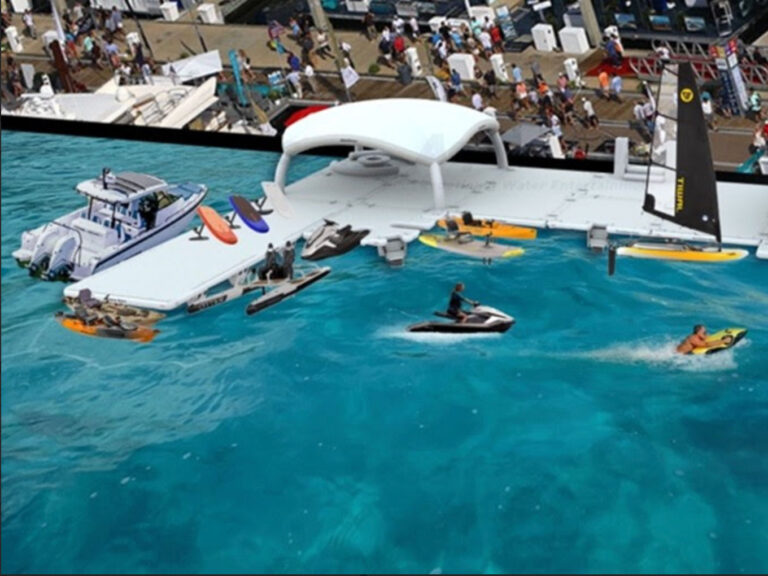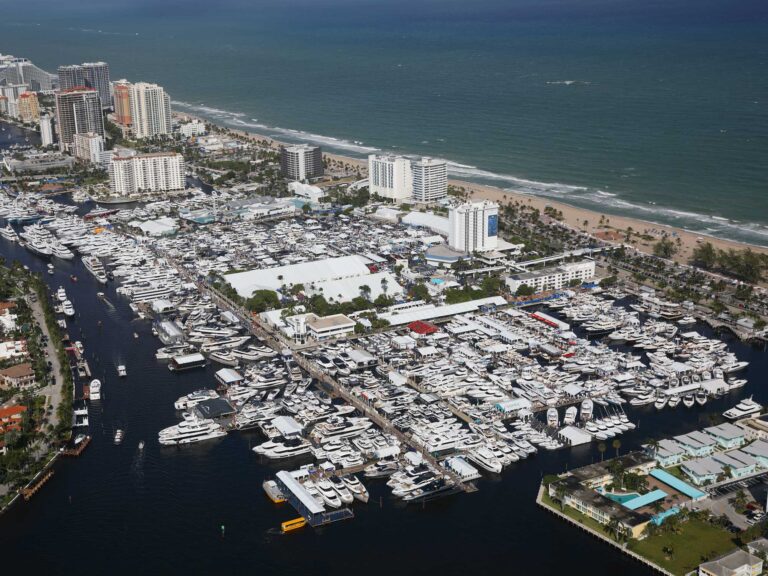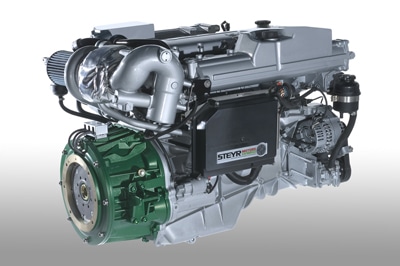
Contributing editor Lenny Rudow’s feature article in our March issue detailed how using a relatively simple set of solar panels, ordinary batteries and an electric trolling motor from a sporting goods store can save you fuel by allowing your boat to operate on electric power some of the time. It proved a point but also raised some limitations. Chief among them is the reliance upon a sunny day to recharge the batteries that drive the electric motor.
A good way to circumvent that dilemma is to install a generator to charge the batteries. A true hybrid system doesn’t rely upon the sun. A combination of generators, engines and electric motors provides propulsion. How those components are configured determines what kind of hybrid system we’re talking about. There are three basic types of hybrid marine propulsion.
The first has been around for decades and probably at least sounds familiar: diesel electric. In a diesel-electric system, an internal combustion (IC) engine, which could be gas or diesel, is connected directly to an electrical generator. From this point on, the power in the system is transferred electrically to the propeller shaft via a motor controller and electric motor. The system may have multiple generators and multiple motors connected to a common electrical bus. Diesel-electric trains are common, and many large ships, such as the Queen Mary 2, also use diesel-electric power. By the strict definition this is not a hybrid, because there is no electric storage of energy — at least not enough to run the boat anyway.
The serial hybrid is similar to the diesel electric in that there’s no physical connection between the internal combustion engine and propeller shaft. The prop is turned by an electric motor, always. Serial hybrids do have a battery bank wired in to store energy that is generated, so you can stop the engine and use energy stored in the battery bank to drive the prop shafts. With large batteries you can have long periods of electric propulsion driving onboard electrical appliances without resorting to the generator.
The third type of hybrid is called parallel hybrid. The determining fact that makes a hybrid system parallel is that the internal combustion engine is directly coupled to the drive shaft in addition to the electric motor. This is accomplished by a set of gears that are sometimes called a power split. It’s a mechanical device that allows transfer of power between two sources. You can drive the propeller directly from the internal combustion engine. You can drive the propeller directly from the electric motor. You can also deliver power from both engines simultaneously. Finally, you can often disconnect the propeller from the internal combustion engine to create a stand-alone generator function. Parallel hybrids, such as the Steyr Hybrid Drive System, make the most sense for recreational boats. Here’s why.
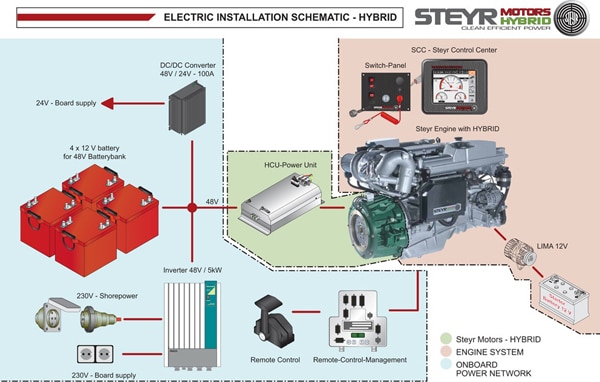
It’s true that electric motors provide all of their torque all of the time, unlike IC engines, which make peak torque within a narrow band of operation. And torque is the force that turns a prop or a wheel. That’s why humongous vehicles like ships and trains use diesel electric. But both diesel electric and its kissing cousin, the serial hybrid, have a flaw. If the electric motor goes, you are without propulsion. Sure, you could rig a power takeoff from one of the generators to accept a chain or belt that could drive the shaft in the event of electric motor failure. But aboard today’s already-crammed-to-the-gunwales recreational boats, that’s generally not feasible.
A second problem is the losses between the IC engines and the prop. There is no free lunch. Suppose you need 400 hp — that’s about 290 kilowatts — at the prop to drive your boat. Well, because of losses in the system, you’d need an engine closer to 500 hp to deliver that 290 kW to the props. That negates the efficiency of a hybrid. Ships and trains benefit from economies of scale — and they need all that torque, all the time. The typical recreational boat with a planing hull does not.

High-Bred Hybrids
Besides redundancy, the nice thing about parallel hybrids is that you can use the type of power needed for the task at hand. Full planing power via the IC engines that we are all used to lets us run as fast as conditions dictate. At lower speeds, we can save a bit of fuel by “boosting” with the electric motor. Around the dock, we get massive torque for increased control at slower speed maneuvers. And in no-wake zones, or during those “putting around looking at the waterfront” trips, using the electric motor keeps things quiet and uses no fuel, except that needed later to recharge the batteries.
Suppose we added solar panels to a parallel hybrid system…
Takeaway One: Most boaters use the terms interchangeably, but properly speaking, there are internal combustion engines and electric motors.
Takeaway Two: While gasoline hybrids can work, diesel has the advantage of delivering more-efficient combustion, more torque to run a generator with less loss of power, and the ability to burn biodiesel as fuel.
Boating has been covering hybrid boats longer than anybody. As proof, check out this article by David Seidman.
Additionally, boatingmag.com is loaded with hybrid information. To see videos of hybrid boats at high speed, click HERE and HERE.
Look for our head-to-head test of two hybrid boats, Pearson 34 G and Greenline 33, coming soon only at boatingmag.com!

